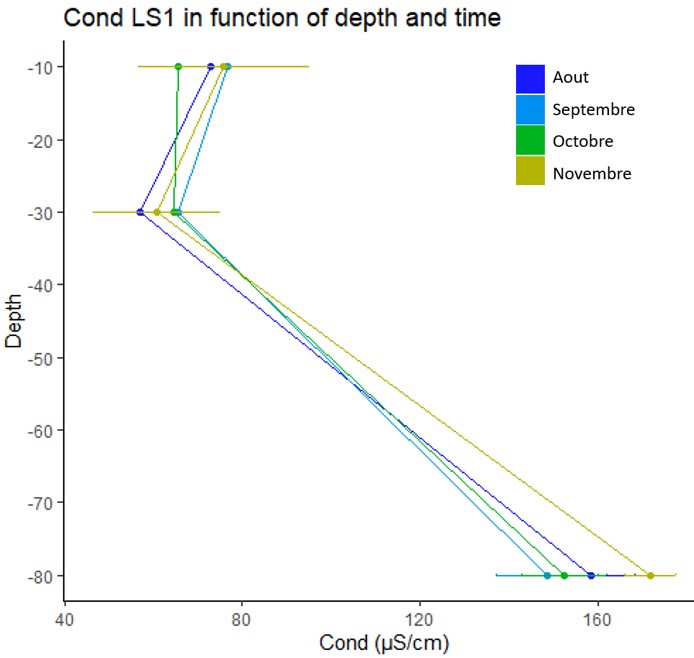The objective of this work package is to understand the processes controlling nutrients and dissolved organic carbon fluxes. The short-term hydrogeochemical behavior will be studied and the long-term controls will be analyzed.
Some redox probes were installed in December 2023 to follow the evolution of the redox potential and its potential influence on carbon and nutrient fluxes. Rhizons samplers were installed in June 2023 at the 5 sites of interest at 3 different depths. Once per month, this soil pore water is collected and then analyzed in the lab for pH, conductivity, anions, nutrients, dissolved organic carbon, organic carbon aromaticity and Fe(II)/Fe(III) ratios. Our first results revealed that meteorological events influenced concentrations of nutrients and organic carbon. They also demonstrated the importance of ground water dynamics in controlling soil conductivity and pH equilibrium. Finally, the soil solute chemistry varied as function of topographic position and sampling depth and will be further analyzed in hydrologic export.

River and drain water are sampled once per month (starting August 2023) and are analyzed for the same characteristics as for river water. Also, the river discharge is measured every 10 minutes, allowing some carbon and nutrient fluxes in the river. pH and conductivity vary over time.
We want to use statistical techniques to investigate the long-term conditioning on the short-term response patterns of soil biogeochemical processes. This task will start in spring 2024.